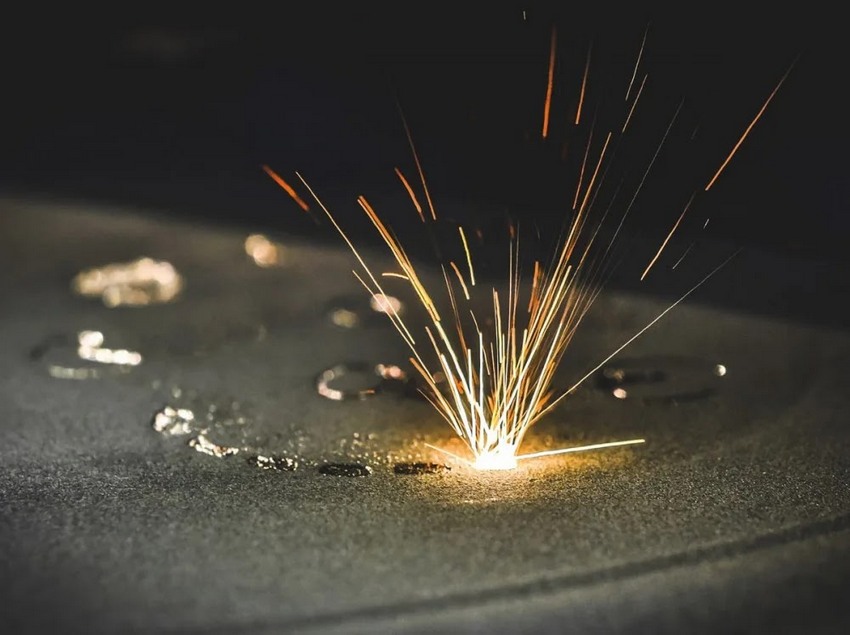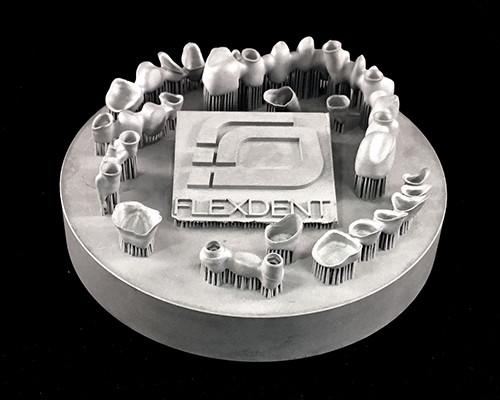Sinter Laser Metal Printing, also known as Laser Sintering Metal Printing, is an advanced additive manufacturing process that allows the layered creation of metal products and parts based on a digital model.
This technology has been used at FlexDent's Milling Centre for many years to produce dental products to the high satisfaction of our customers, reliably and consistently delivering high quality.
It is a relatively new technology that is constantly developing and spreading in the industry. The principle of laser sintering metal printing are as follows:
Creating a digital model: first, a 3D digital model of the designed product is created. This model allows the application to build the product layer by layer.
Forming a powder layer: The material used for metal printing, which is in the form of a fine powder, is spread over a flat surface.
Laser sintering: In the laser sintering process, a high-energy laser is used to melt or sinter specific points on the powder layer. This laser melting allows the formation of desired layers that are solid and adhere well to the previous layers.
Repeating layers: By spreading the powder layer over and over again and repeating the laser sintering layer by layer, the product is gradually built up. Cooling and post-processing: Once the part is fully built and cooled, it is post-processed, such as heat treatment, to improve the material properties and performance of the product.

Sinter Laser metal printing offers a number of advantages for industrial applications, such as:
Creating complex geometries: metal printing allows the creation of products and unique parts that are traditionally difficult or impossible to produce using other manufacturing processes.
Efficient use of material: Laser sintering metal printing limits the material used to only the parts that are really needed, thus reducing material waste.
The sinterable metal powder is produced from materials such as stainless steel, aluminium, titanium, nickel, cobalt and other metallic alloys. These metal powders can have different particle sizes and chemical compositions, allowing the production of parts with different properties. In dental technology, nickel-free alloys are typically used, such as Co-Cr and titanium.
Rapid prototyping and mass production: additive manufacturing processes allow rapid prototyping of parts and small batch production.
Laser sintering metal printing can be a useful technology in aerospace, automotive, medical - and I would like to highlight dental as our own speciality - and other industries where high precision, reliability and customisation of products and parts are required. This precision and reliability is something we at FlexDent fundamentally emphasise.
It is important to note that technology is evolving and new materials and processes are becoming available in Sinter Laser metal printing. The materials listed here were known until 2021, but additional metal powders and alloys will become available in the future.

